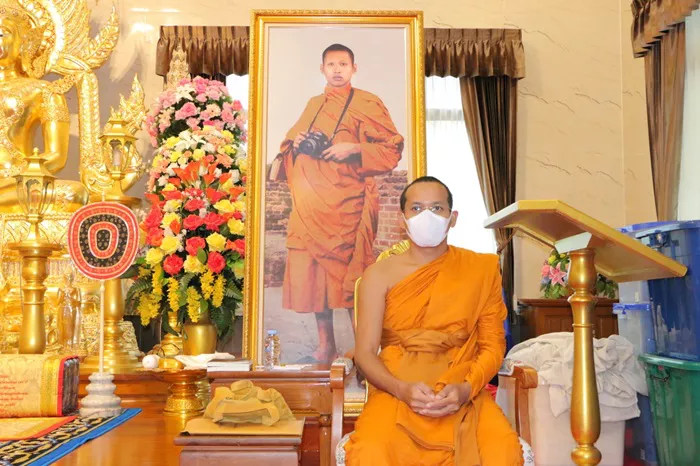Theravada Buddhism is one of the oldest forms of Buddhism that traces its roots directly back to the teachings of the Buddha. It is widely practiced in countries such as Thailand, Sri Lanka, Myanmar, Laos, and Cambodia. This article will explore how Theravada Buddhism works, its main beliefs, practices, and history, providing an accessible guide to understanding this ancient tradition.
Theravada Buddhism Meaning
Theravada Buddhism, often called the “Teaching of the Elders,” focuses on the earliest teachings of the Buddha, as preserved in the Pali Canon, one of the most ancient collections of Buddhist scriptures. It emphasizes personal enlightenment through meditation and ethical conduct.
In Theravada Buddhism, individuals are encouraged to strive towards achieving Nirvana, a state of ultimate liberation from the cycle of birth, death, and rebirth. This is done through understanding the Four Noble Truths and following the Noble Eightfold Path, which serves as a practical guide to ethical and spiritual development.
The Four Noble Truths
The Four Noble Truths form the core of Theravada Buddhist teachings. They are:
- The Truth of Suffering (Dukkha): Life is inherently filled with suffering, whether it is physical pain, emotional distress, or existential dissatisfaction.
- The Truth of the Cause of Suffering (Samudaya): Suffering arises from desire, attachment, and ignorance.
- The Truth of the Cessation of Suffering (Nirodha): It is possible to end suffering by eliminating its causes.
- The Truth of the Path to the Cessation of Suffering (Magga): The Noble Eightfold Path leads to the cessation of suffering and ultimately to Nirvana.
The Noble Eightfold Path
The Noble Eightfold Path is a set of principles that guide a person in living ethically and cultivating wisdom. It includes:
- Right Understanding: Understanding the nature of reality and the Four Noble Truths.
- Right Intention: Cultivating positive, compassionate intentions.
- Right Speech: Speaking truthfully and kindly.
- Right Action: Acting in ways that are ethically sound and non-harmful.
- Right Livelihood: Earning a living in a way that does not cause harm to others.
- Right Effort: Cultivating wholesome qualities and overcoming negative habits.
- Right Mindfulness: Developing awareness of the body, feelings, mind, and phenomena in the present moment.
- Right Concentration: Practicing deep meditation to develop a calm and focused mind.
Theravada Buddhism History
Theravada Buddhism has a rich and fascinating history that stretches back over 2,500 years. It is the earliest form of Buddhism, based on the teachings of Siddhartha Gautama, the Buddha. After the Buddha’s death, his teachings were passed down orally and later written down in texts called the Tripitaka, which form the foundation of Theravada Buddhist doctrine.
In the early centuries, Buddhism spread from India to other parts of Asia. Theravada Buddhism made its way to Sri Lanka in the 3rd century BCE, where it became the dominant form of Buddhism. Over time, it spread to Southeast Asian countries, where it remains the major tradition today.
The history of Theravada Buddhism can also be seen in the development of monasticism, where monks and nuns live according to strict rules and dedicate themselves to meditation, study, and teaching. This monastic tradition remains an essential part of Theravada practice.
Core Beliefs in Theravada Buddhism
Theravada Buddhism places great emphasis on the individual’s personal effort to achieve enlightenment. The core beliefs include:
- Karma: Every action has consequences. Good actions lead to positive outcomes, while harmful actions lead to suffering.
- Rebirth: Life is a cycle of birth, death, and rebirth, driven by karma. One’s actions in this life affect future lives.
- Impermanence (Anicca): All things are constantly changing and nothing is permanent.
- Suffering (Dukkha): Life inevitably involves suffering, which is caused by desire and attachment.
- Non-Self (Anatta): There is no permanent, unchanging self. The idea of a “self” is an illusion, and understanding this leads to liberation.
Meditation and Mindfulness
One of the primary practices in Theravada Buddhism is meditation, which is used to develop concentration, insight, and mindfulness. Meditation practices vary, but they often include techniques like Vipassana (insight meditation) and Samatha (concentration meditation).
Through regular meditation practice, practitioners learn to observe their thoughts, emotions, and sensations without attachment. This helps them gain insight into the nature of reality and develop a deep sense of peace and clarity.
The Role of Monks in Theravada Buddhism
Monks play a central role in Theravada Buddhism. They dedicate their lives to the study of the Buddha’s teachings, meditation, and helping others along the path to enlightenment. Laypeople often seek guidance and teachings from monks, and they also offer support to the monastic community by providing food, shelter, and other necessities.
Theravada Buddhism Practice Today
Today, Theravada Buddhism continues to thrive in countries across Southeast Asia and beyond. It is practiced by millions of people who seek to live in harmony with the Buddha’s teachings and cultivate wisdom, ethical conduct, and mental discipline.
Modern-day Theravada Buddhists engage in various practices, including meditation retreats, temple visits, and the observance of Buddhist holidays such as Vesak, which commemorates the birth, enlightenment, and death of the Buddha. In these practices, they continue to strive for the ultimate goal of enlightenment, just as the Buddha taught over two millennia ago.
Conclusion
Theravada Buddhism is a profound and practical tradition that offers valuable teachings on how to live a more mindful and compassionate life. Through its emphasis on personal effort, ethical conduct, meditation, and the pursuit of wisdom, it continues to inspire millions around the world on their spiritual journeys. To understand the true essence of Theravada Buddhism, one must engage deeply with its teachings and practices, and this path remains as relevant today as it was in ancient times.

